“If the work’s too hard, make it easier”
A new institute is aiming to enhance the participation of people with occupational disabilities in the labour market. The Inclusive Labour Organisation Expertise Centre (CIAO), launched by Maastricht University in September 2016, will make insights from research available to companies, governments and social organisations. “Many people have trouble finding a job independently. We want to help as many as possible into work”, says Fred Zijlstra, UM professor of Labour and Organisational Psychology and director of CIAO. “Nobody in our society deserves to be sidelined.”
For people with physical, mental or intellectual disabilities and a lower than average education level, it can be difficult to find and hold down a job. “And that’s a shame, because they have plenty to offer organisations”, Zijlstra says. The CIAO aims to turn the tide by increasing the participation of this population in the workforce. “In an inclusive labour organisation, people with disabilities can flourish just like anyone else.”
Adequate support
The new Expertise Centre brings together the knowledge of UM and the Employee Insurance Agency (UWV) with a view to reducing distance to the labour market and increasing the employability of people with occupational disabilities in a sustainable fashion. In addition, the two partners have developed a method for supporting employers in restructuring their work processes so as to provide more job opportunities for people with disabilities.
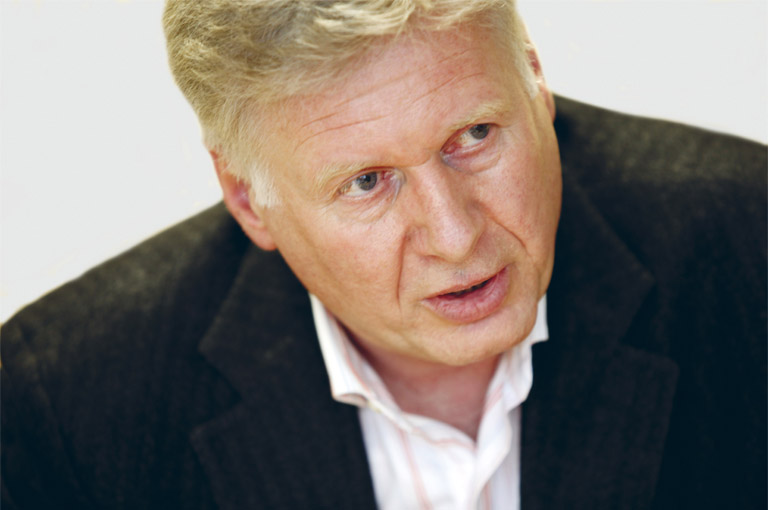
Fred Zijlstra (1956) has been professor of Labour and Organisational Psychology at UM since 2006. He previously worked at the University of Surrey in the UK and various other Dutch universities. His current research revolves around labour participation and sustainable employability, focusing on topics such as recovery after work.
Imbalance
In fact, making the required changes is relatively straightforward, Zijlstra explains. All it involves is organising the work differently and redistributing certain tasks. “What we’ve been seeing in recent years is that more and more people can no longer meet the demands of the labour market. The work is becoming increasingly complex and the job requirements more demanding. At present 100,000 young people in the Netherlands are on disability benefits specifically aimed at people who become unfit for work at a young age. And yet more and more organisations are having trouble filling vacancies. With baby boomers retiring en masse, the healthcare, education and IT sectors are already having problems finding qualified staff. In time this imbalance brings about major problems for the economy. So it’s important that anyone who is able to work, can work.’’
Using talent
“If the work’s too hard, make it easier. That’s the key everything revolves around”, Zijlstra says. “Broadly speaking, many existing jobs are not suitable for people with disabilities. These days workers need all sorts of competences. Technicians have to understand the relevant technology, be able to plan and organise their own work, liaise with colleagues and be customer friendly. People with disabilities often can’t meet all these requirements.” What often can be done, however, is to structure and allocate the work differently so as to increase participation and make optimal use of all available talent.
Demand-driven situation
To assist organisations in this restructuring process, Zijlstra and Henny Mulders from the UWV developed the method Inclusive Redesign of Work Processes (Inclusief Herontwerp Werkprocessen, IHW). The aim of such a redesign is to do justice to the talents of people with occupational disabilities and enable workers to focus on core tasks that match their training and competences. “We create, as it were, a demand-driven situation and help organisations to open up vacancies at all levels. Aside from the fact that the Participation Act requires companies to help people both with and without disabilities into work, employers can also benefit from taking on someone with an occupational disability. One advantage is lower labour costs. And often the risks are covered by the UWV.”
Deepening knowledge
Following a successful pilot at the Slotervaart Hospital in Amsterdam involving some 60 young people on disability benefits, the IHW method has been rolled out in several dozen healthcare, government and other organisations around the country. Zijlstra hopes to build on this knowledge and, through the Expertise Centre, make it more widely available. “We’ve trained 70 analysts from the UWV and numerous city councils and companies to apply the method. The idea is for them to conduct analyses and transfer their knowledge to human resources officers within the organisations. By following a nine-step cycle, companies can gradually transform into inclusive labour organisations.”
This would, in Zijlstra view, be a win-win situation. “It’s not only the target group that benefits; society too profits from having as many people as possible in work. In addition, the Expertise Centre is a nice valorisation instrument for UM: we give back to society every piece of knowledge we acquire.”
By: Graziella Runchina (text) and Sacha Ruland (photography)
“Specific tasks for workers with occupational disabilities”
To improve the way it accommodates employees with occupational disabilities, in early 2016 the wellness resort Thermae 2OOO in Valkenburg aan de Geul conducted a business analysis in cooperation with the UWV. The analysis was carried out in accordance with the Inclusive Redesign of Work Processes method.
“We’re a large company with many job opportunities in different departments, including the reception, catering, cleaning and technical services”, says food and beverage manager Renée Dzialiner. “The business analysis highlighted tasks across different departments that can be performed by people with disabilities. For example, a number of specific tasks were identified at one of our catering sites, such as making fresh sandwiches and clearing tables. The staff member we appointed as part of the programme, Iris, is a young woman of 20 whose disability means she isn’t able to read well. With the help of the business analysis, we were able to cluster certain tasks in this catering unit.” As a result, Iris can be assigned tasks that require no or little reading.
“Iris has already made good progress”, Dzialiner continues. “She chats with the guests and always asks whether they’d like another cup of soup to go with their bun. She enjoys learning and feels comfortable with the catering team. That gives us energy in turn. Clustering tasks like this will definitely allow us to give people with disabilities the opportunity to work with us in the future.”
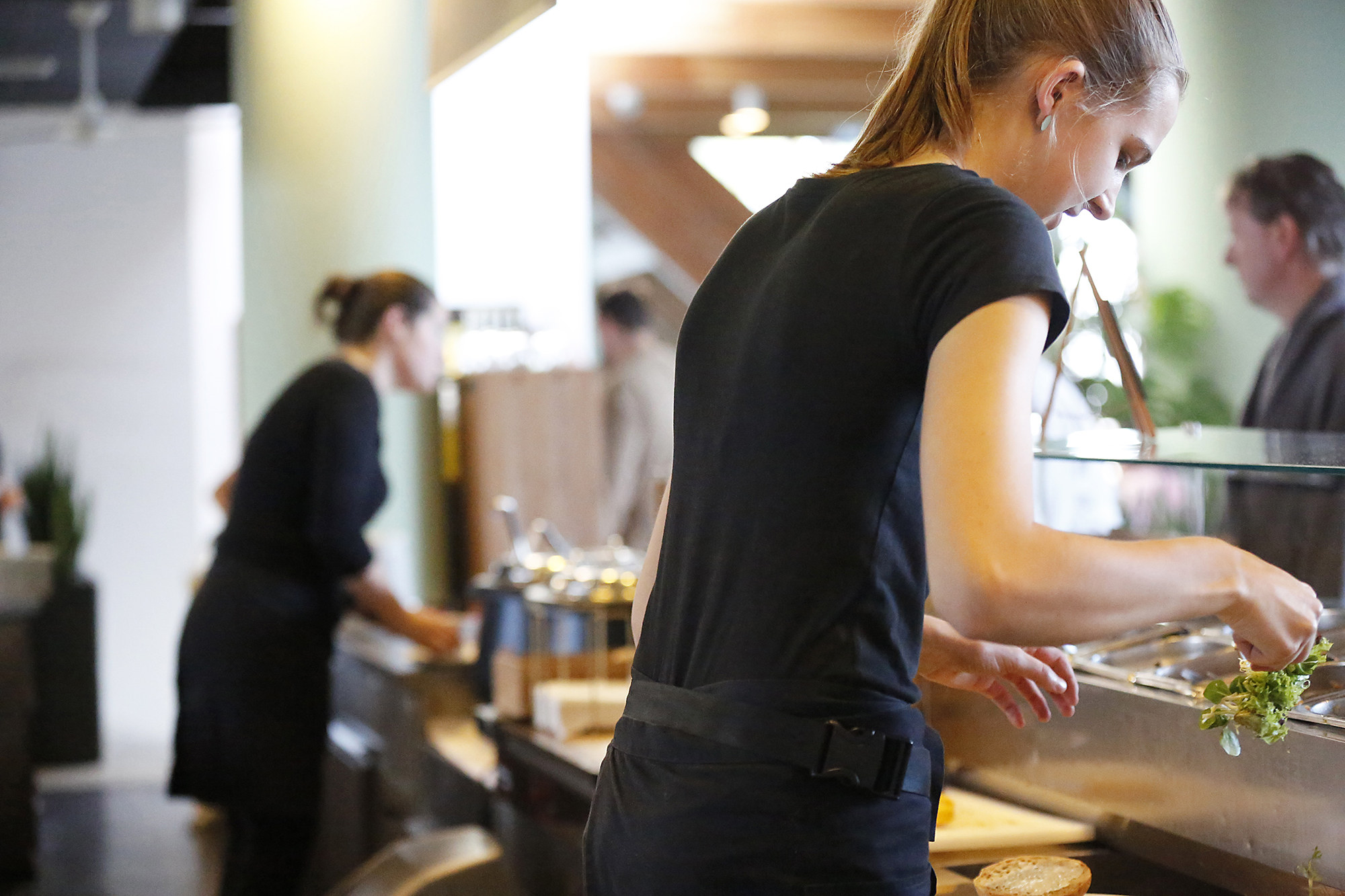
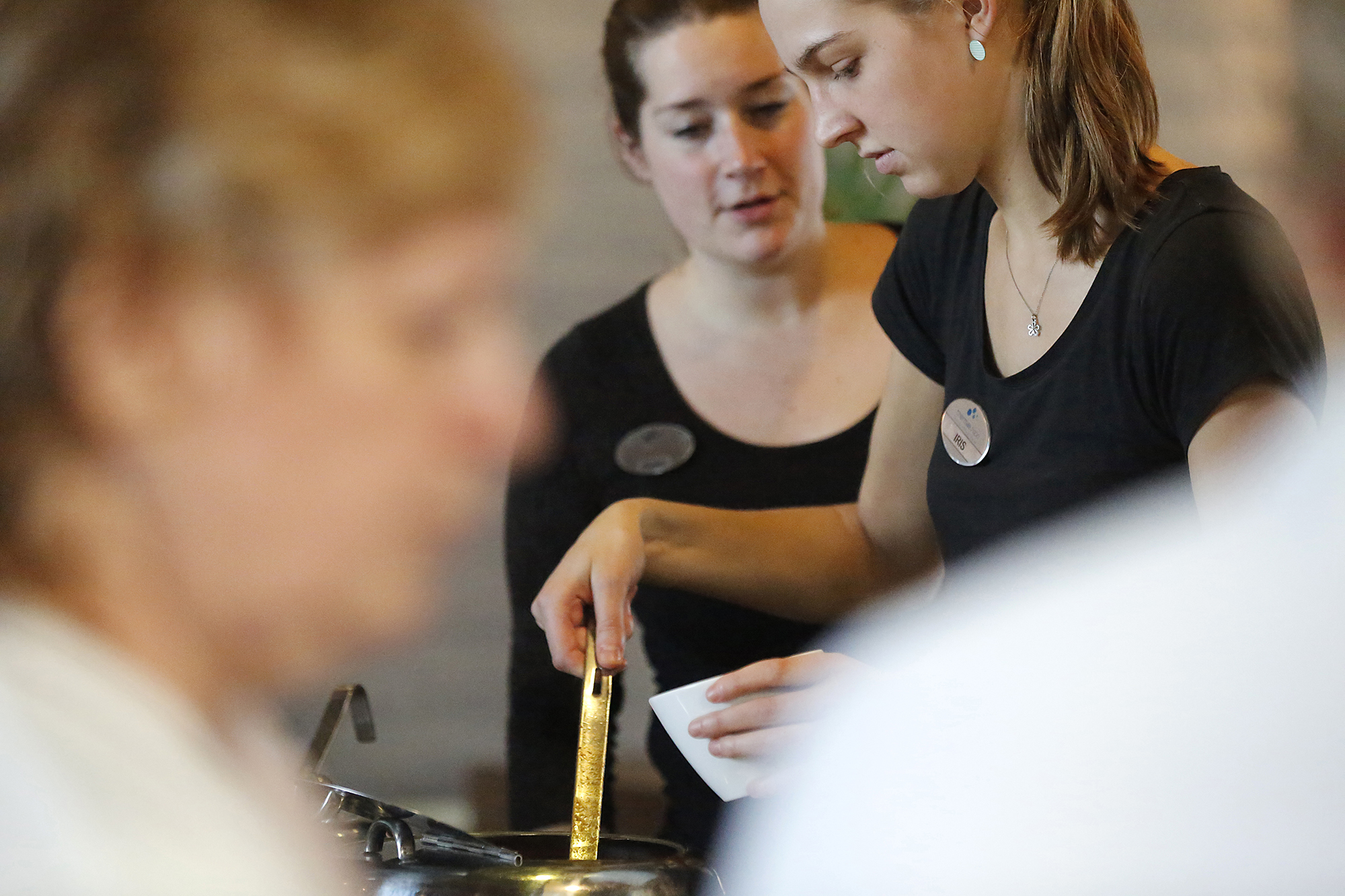
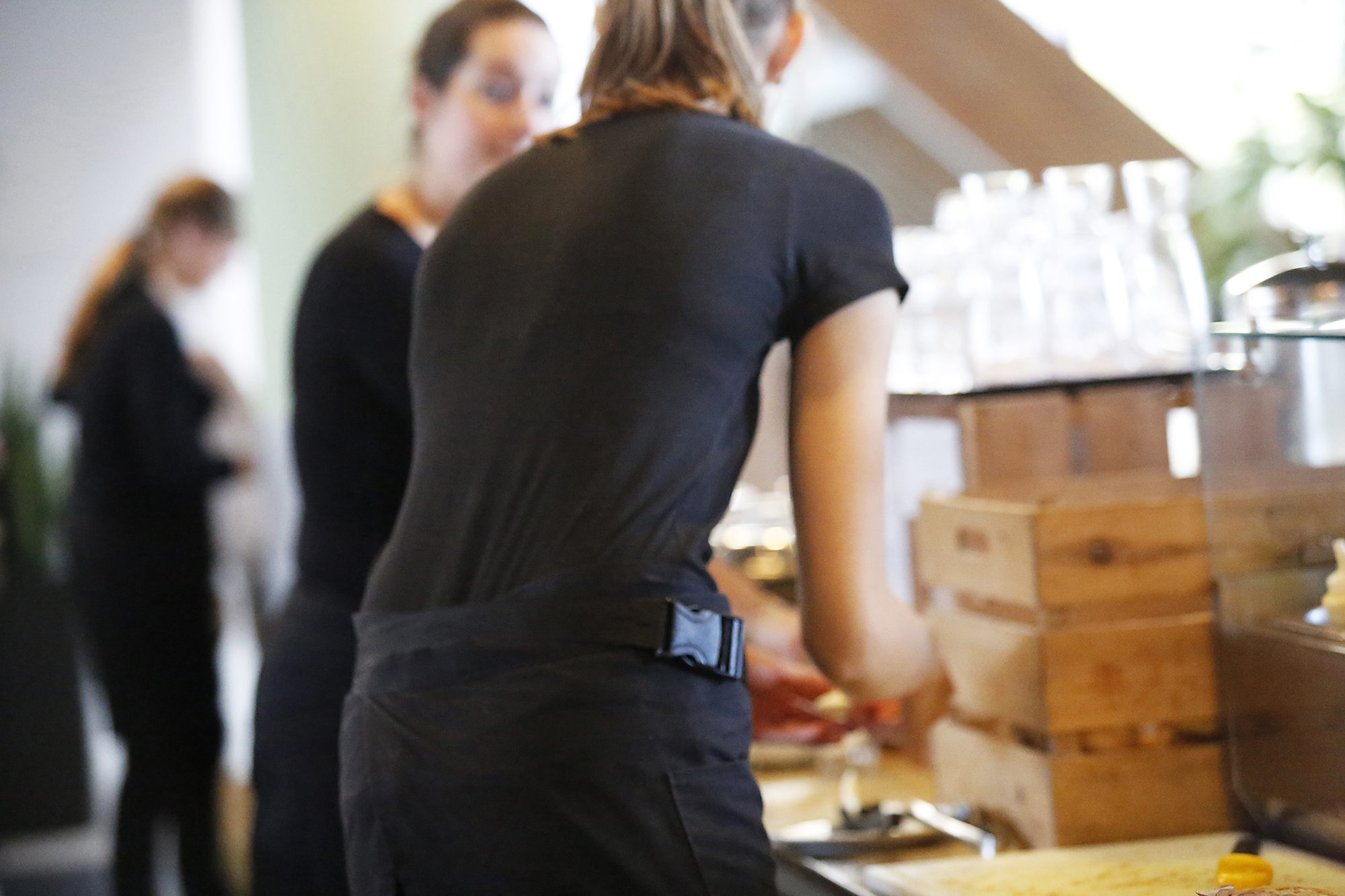
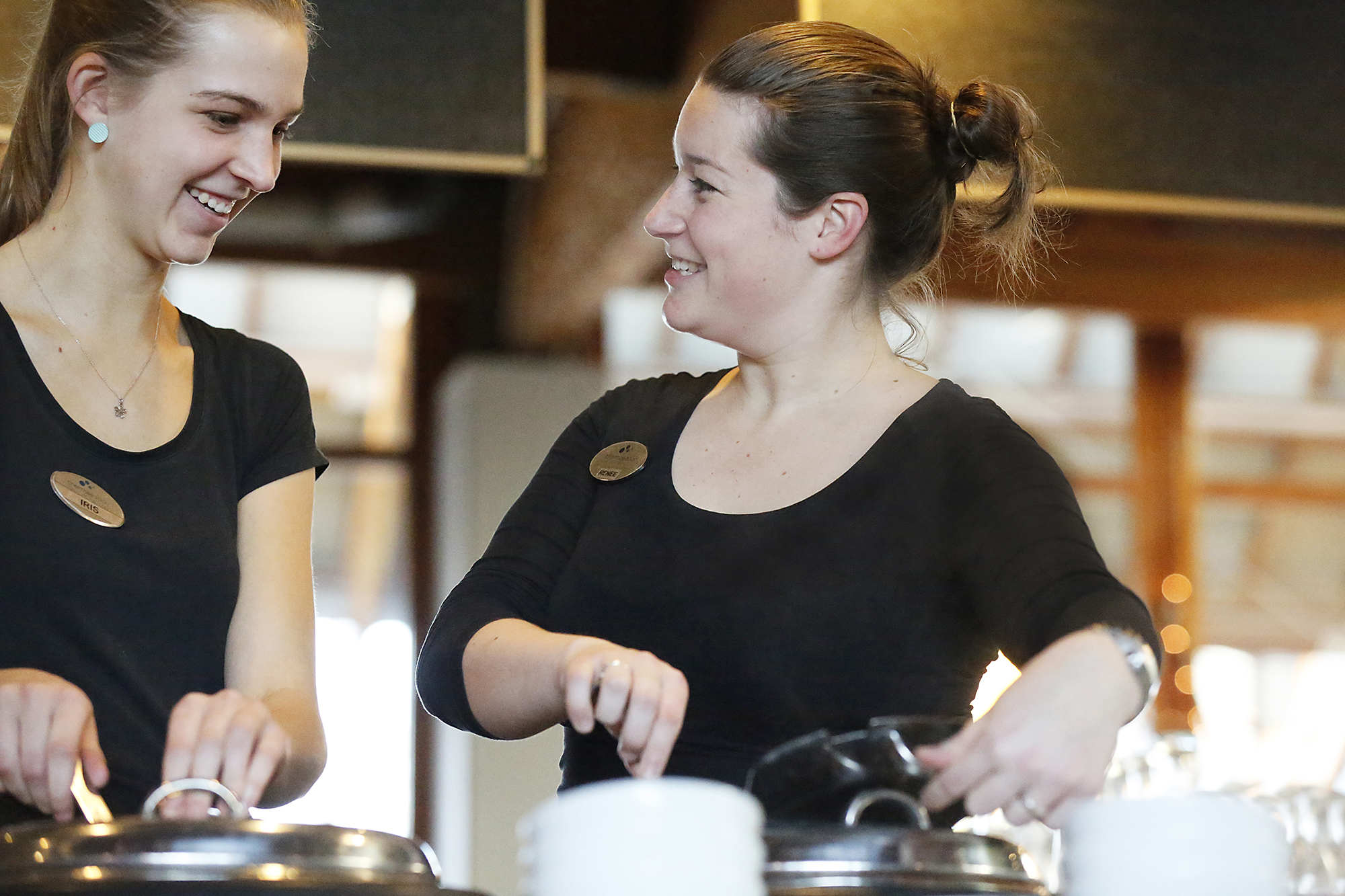
Thanks to the CIAO and UWV, Thermae 2000 was able to appoint Iris in the catering. Iris is a young woman of 20 whose disability means she isn’t able to read well.